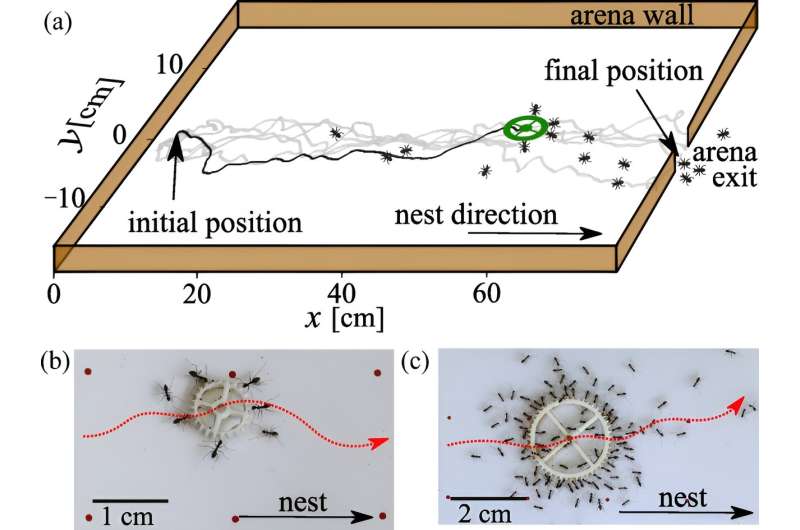October 10, 2023 report
This article has been reviewed according to Science X's and . have highlighted the following attributes while ensuring the content's credibility:
fact-checked
peer-reviewed publication
trusted source
proofread
Ants collectively carry large objects in a way that mimics a self-propelled particle moving through fluid

A team of physicists at the Weizmann Institute of Science in Israel has found that when ants of a certain species collectively carry a large object, they do so in a way that mimics a self-propelled particle as it moves through a fluid. In their paper published in the open-access journal PRX Life, the group describes their study of the behavior of Paratrechina longicornis, a species of ant that are known for collectively carrying large food items to their nests.
When ants of a cooperative species encounter a food item, they seek assistance by creating a trail of pheromones. Other ants follow the trail and meet up at the site. Once enough of the ants arrive, they each grab the item (typically a leaf) with their mouths. Ants in front pull, leading the others in the direction of the nest. Those toward the back not only push, but lift, to reduce friction, leading to less wasted energy by the group.
Prior research has also shown that at the beginning of such a journey, each of the ants begins to pull in what they believe to be the direction of the nest, many of them mistakenly. Thus, they play tug-of-war for a few seconds. Eventually, a group mentality prevails and the ants all follow the leader, carrying the food item all the way back to the nest. It has also been noted that during the trip, ants fall away as they grow weary and are replaced by fresher ants.
In this new effort, the research team took a more collective look at the ants as they carried their load. They coated cogs of various sizes with cat food to serve as a food source and then filmed the action as the ants under study amassed around the food source, picked it up and then carried it home.
Over multiple trips, the researchers found that the behavior of their ants closely mimicked the actions of a self-propelled particle as it moves through a liquid as described by Langevin equations. They suggest that the reverse could be true, as well—the behavior of a self-propelled particle could serve as a model for characterizing the behavior of a system of interacting individuals.
More information: Tabea Heckenthaler et al, Connecting cooperative transport by ants with the physics of self-propelled particles, PRX Life (2023). .
Journal information: PRX Life
© 2023 Science X Network





















